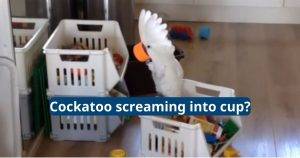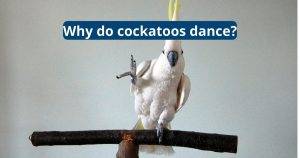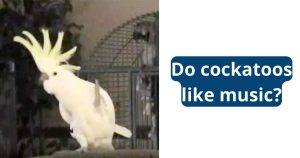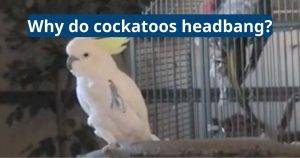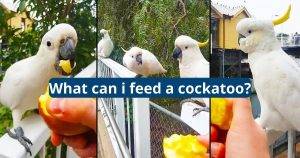Why Do Cockatoos Headbang?
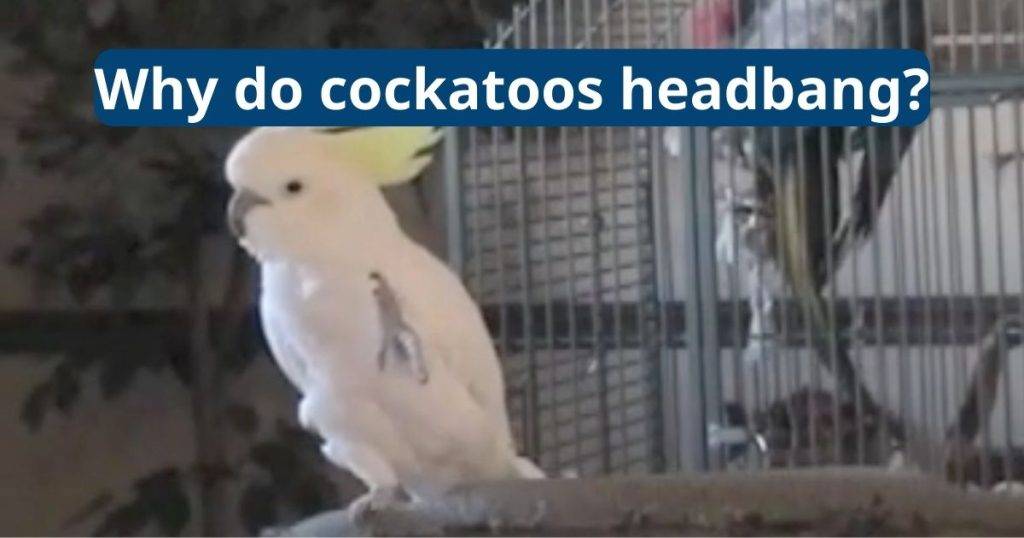
A cockatoo named Snowball became an Internet celebrity when a video of him dancing to the Backstreet Boys went viral. Neurobiologist Aniruddh Patel noticed that the cockatoo moved to the rhythm of the song in a way that seemed spontaneous. Cockatoos can drum with a stick or their crest feathers, and they use the raised crest as a greeting or a signal of aggression. They may also drum as a way of bonding with mates.
It’s a form of exercise
Cockatoos have a tendency to headbang whenever they hear music that moves them. In some cases, the birds do this to exercise, or even to communicate with other parrots. This behavior is also an indication that the bird is feeling playful and happy.
A cockatoo named Snowball became a YouTube star a decade ago when video of him dancing to the Backstreet Boys went viral. His shimmying dance moved researchers, who studied the bird’s 14 different dance moves. According to a study published in Current Biology, this shows that parrots can impulsively synchronize their movements to the beat of a song.
Scientists believe that parrots may have this ability because they are skilled vocal learners whose brains contain strong auditory-motor connections. They also have the ability to imitate nonverbal movement and a tendency to develop long-term social bonds. Unlike dogs, who can learn to synchronize their body movements with a certain rhythm, cockatoos have a natural talent for getting down to the beat.

It’s a form of communication
You may have seen a viral video of Snowball, the cockatoo who went viral in 2007 for dancing to the Backstreet Boys song “Everybody.” But you might not know that the bird has 14 different dance moves and can do things like headbanging and vogueing. According to a new study published in Current Biology, Snowball is able to create and perform spontaneous movements to music on his own.
The researchers were surprised to find that the cockatoo could create such a range of dance moves on its own without being taught how. They believe this is the first time a nonhuman animal has been shown to be able to dance independently to music.
While this behavior is harmless, it can be confusing for first-time owners. Pet cockatoos also make clicking noises when they are happy or agitated. This is usually an indication that they are feeling comfortable and want to interact with people. Sometimes they click to communicate that they need something from their caretakers.

It’s a form of entertainment
A cockatoo named Snowball has taught itself 14 different dance moves, including body rolls and headbanging. The sulphur-crested bird rose to fame on YouTube a decade ago when he shimmied to the Backstreet Boys’ “Everybody.” Researchers at Tufts University wanted to find out more about the animal’s talent, and discovered that parrots can dance to music just like humans.
The scientists analyzed videos of Snowball dancing to Queen’s “Another One Bites the Dust” and Cyndi Lauper’s “Girls Just Want to Have Fun.” They found that the cockatoo’s movements were in time with the song’s beat. They also observed that Snowball was able to keep moving at the same pace regardless of whether the song was slow or fast.
They concluded that cockatoos can dance to a beat because their brains have strong auditory-motor connections. In addition, cockatoos are naturally social animals and they enjoy spending time with their owners. They are often seen raising the crest of their feathers to show excitement when playing or interacting with their care staff.

It’s a form of bonding
Snowball, a cockatoo, became an Internet celebrity when videos of him dancing to the Backstreet Boys went viral. His owner, Irena Schulz, was surprised to find that her pet was able to keep to the rhythm of the music and dance around in his cage.
She decided to film him again, and this time she noticed that he was headbanging, tapping his foot and even voguing. This is remarkable, as creativity in non-human animals has only been documented in behaviours aimed at obtaining an immediate physical benefit, such as access to food or mating opportunities.
Neurobiologist Aniruddh Patel and his team at Tufts University were also astonished by the video, and they have now found that Snowball can do 14 different dance moves to music, including body rolling, foot tapping and headbanging. They believe that this is more than just a trick and may shed light on how humans process music. It also suggests that cockatoos, and perhaps other vocal-learning animals, have a similar ability to move to music.

